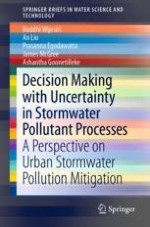This book presents new findings on intrinsic variability in pollutant build-up and wash-off processes by identifying the characteristics of underlying process mechanisms, based on the behaviour of various-sized particles. The correlation between build-up and wash-off processes is clearly defined using heavy metal pollutants as a case study. The outcome of this study is an approach developed to quantitatively assess process uncertainty, which makes it possible to mathematically incorporate the characteristics of variability in build-up and wash-off processes into stormwater quality models. In addition, the approach can be used to quantify process uncertainty as an integral aspect of stormwater quality predictions using common uncertainty analysis techniques. The information produced using enhanced modelling tools will promote more informed decision-making, and thereby help to improve urban stormwater quality.
